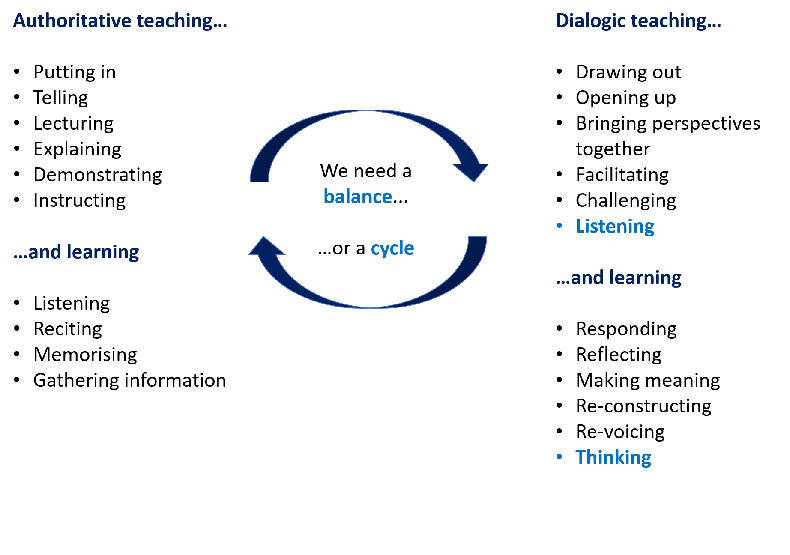If we were together right now, I might ask you to respond by placing yourself on an agree-to-disagree line. I might then fold the line in the middle so that those of you who most strongly agree are paired with those who most strongly disagree, and those of you who are balanced on either side of the dividing line are brought together. We might engage in some dialogue, in pairs and as a whole group. The whole process might last for 10 minutes or so, and I think it would be time well spent expanding our awareness of the different ways in which we view science education and its value.
As far as this statement goes, I’m towards the agreed end. I think that if we want students to engage with science (and perhaps to choose to study it beyond the time for which it’s compulsory to do so), and if we want them to achieve a deeper understanding of key concepts (which might lead to better grades), then the subject has to mean something to them. That is to say that the science we teach has to be connected to our students’ prior learning, and also to their lives, their interests and their aspirations.
A dialogic view of science education is helpful here. It helps us see science as an ongoing cultural dialogue and the role of science education inducting newcomers into this dialogue. This means passing on the powerful knowledge that has been generated to date, but doing so in a way that helps students understand how that knowledge was created by a community of scientists with their ways of doing and thinking. It might also help them to understand that scientific knowledge is incomplete, provisional and evolving, not finished, final and fixed. Our students can aspire to join the scientific community, contribute to the ongoing cultural dialogue; to join the never-ending adventure of science.
A philosophical approach to science teaching can be useful. Scientific methods, theories and explanations all provide food for philosophical thinking, as do science's ethical, social, economic and environmental implications. Consider questions such as:
• Are scientists (like Oppenheimer) responsible for how their work is applied?
• In what sense, if any, is energy a real thing?
• What makes an explanation ‘scientific’?
• How many apples would you need to see falling downwards before you can be certain that all apples will fall downwards?
These questions (easily translated into contestable statements, if desired), and many more like them, could be connected to various topics, and contemporary events. Engaging in dialogue around them calls students out to think, to strive to see things from the perspective of the scientific community, and to connect science to their experience and their own developing worldview. And because such questions have no authoritative right answer, they encourage students to see their responses or the responses that they construct collaboratively with their classmates and teacher through their dialogue, as having value. The student is made to feel present – heard, worthy - part of a community of enquiry.
This notion of making students feel present is an important one. It represents a step towards accepting them as partners in the knowledge-making process and appreciating teaching and learning as a two-way endeavour to which the students bring something of value and in which they have the opportunity – the responsibility – to make personal meaning of that which they are being taught.
Even when the knowledge we are engaging with is seen to be established and uncontestable, the student should be actively involved in making sense of it. Take the scientific perspective on the concept of energy, which may well conflict with the student’s everyday understanding of the term. There is a place for authoritative, transmissive teaching of the concept – telling, demonstrating, and explaining; this is essential, but not sufficient. If the teacher’s knowledge is to become the student’s knowledge, the student needs to be called out to think, respond, reflect, re-construct their understanding, to give voice to their learning. Ultimately, students and teachers have to reason together across the gap of difference in their understandings. Reason across difference is a pretty good definition of dialogue.
The Austrian Jewish scholar Martin Buber offers us the beautiful metaphor of the ‘narrow ridge’, a precarious elevation between perspectives where teacher and student can reason across differences together. It is the role of the teacher to call students onto the ridge by suspending transmission and adopting a dialogic voice - a voice which makes the students present, values what they bring, and calls on them to make new meaning. This begins with an attitude, a turning towards and listening to the student with humility, a disposition to come out to meet them where they are, while gently pointing the way to a new understanding.
Teaching and learning, I think, is an inherently dialogic process. Dialogue, sadly, is not always needed for students to pass exams in science. But if their learning is to be meaningful, if they are to come to understand science, to perhaps have an interest in joining the scientific community - joining the adventure of science - it is essential.
Bibliography
Kramer, K. P. (2013) ‘Learning through Dialogue: The Relevance of Martin Buber’s Classroom’, Rowman and Littlefield Education, Plymouth
Phillipson, N. and Wegerif, R. (2017) ‘Dialogic Education: Mastering core concepts through thinking together’, Routledge, Abingdon.
Phillipson, N. (2023) ‘Teaching and learning on Buber’s Narrow Ridge’, Oracy Cambridge, September 7th [Blog]. Available at https://oracycambridge.org/bubers-narrow-ridge/ (Accessed 11/3/24).
For other useful texts on the application of dialogue in science education, see:
Michaels, S. and O’Connor, C. (2012) ‘Talk Science Primer’, TERC, Cambridge MA
Mortimer, E. F. and Scott, P. H. (2003) ‘Meaning Making in Secondary Science Classrooms’, Open University Press, Maidenhead.
Note: I am, as ever, indebted to the insights of Professor Rupert Wegerif, the origin of many of the ideas communicated in this blog.
Dr Neil Phillipson is a former pharmaceutical chemist who spent ten years teaching science in the UK before becoming a trainer and consultant. Neil is a trainer in Philosophy for Children (P4C) with SAPERE (the charity responsible for P4C in the UK) and an affiliate of Oracy Cambridge (an organisation providing training to schools and run by Professor Neil Mercer at Cambridge University). He co-authored the 2017 book Dialogic Education: Mastering Core Concepts Through Thinking together with Professor Rupert Wegerif of Cambridge University. Neil has been a facilitator of dialogue with Generation Global since 2018.


